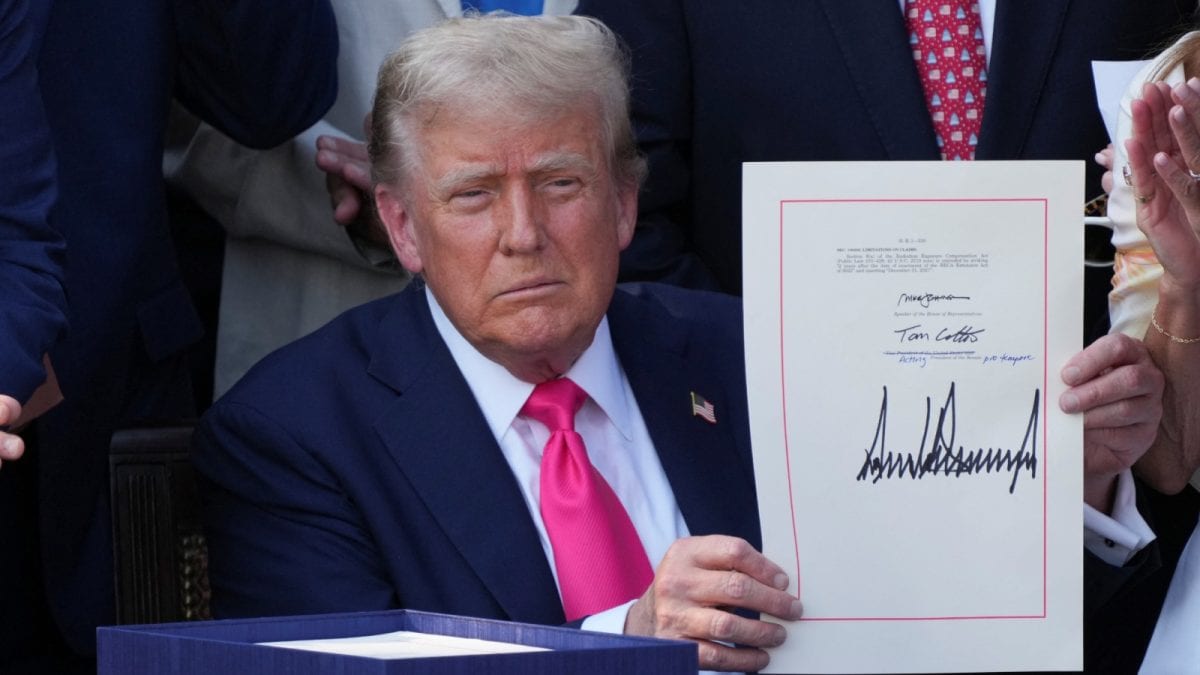ARTICLE AD BOX
Last Updated:July 23, 2025, 17:46 IST
Beijing claims its new dam on the Yarlung Zangbo is responsible and cooperative. Arunachal CM fears a ‘water bomb’, Assam CM says no need to panic yet.

This photo the Yarlung Zangbo Grand Canyon in Nyingchi city, in China's western Tibet Autonomous Region. China is planning a mega dam in Tibet able to produce triple the electricity generated by the Three Gorges -- the world's largest power station -- stoking fears among environmentalists and in neighbouring India. (IMAGE: AFP)
China has defended its controversial megadam project near the Arunachal Pradesh border, insisting that the ambitious hydropower initiative is within its sovereign rights and will not harm downstream nations like India or Bangladesh.
The project, which is being built on the lower reaches of the Yarlung Zangbo River—known as the Brahmaputra once it enters India—was described by the Chinese foreign ministry as a step toward clean energy goals and disaster prevention. “To build the hydropower project in the lower reaches of the Yarlung Zangbo River is fully within China’s sovereignty," ministry spokesperson Guo Jiakung said Wednesday.
“The project aims to speed up clean energy development, improve local people’s life, and proactively respond to climate change," Guo said, adding that China acts with a “high sense of responsibility" in harnessing cross-border rivers and brings extensive hydropower experience to the table.
But the announcement has sparked alarm in India’s northeastern states, particularly in Arunachal Pradesh, where Chief Minister Pema Khandu has called the dam a “ticking water bomb" and an existential threat.
To build the hydropower project in the lower reaches of the Yarlung Zangbo River is fully within China’s sovereignty. The project aims to speed up clean energy development, improve local people’s life, and proactively respond to climate change.China acts with a high sense of… pic.twitter.com/9myFqIsUHw
— CHINA MFA Spokesperson 中国外交部发言人 (@MFA_China) July 23, 2025
“Setting aside the military threat from China, it seems to me that this is a far bigger issue than anything else," Khandu told news agency PTI earlier this month. “It is going to cause an existential threat to our tribes and our livelihoods. It is quite serious because China could even use this as a sort of ‘water bomb’."
China, however, maintains that the dam’s design adheres to the highest national industrial standards, with strict attention to ecological preservation. “The project stays away from multiple environmentally sensitive areas and vows to preserve the original ecosystem to the largest extent possible," Guo said. China claims the dam, once completed, will help prevent and mitigate disasters along the Yarlung Zangbo.
Khandu, however, argued that since China is not a signatory to international water-sharing agreements, there is no obligation for it to release a certain amount of water downstream. “If they were a signatory, this project could have been a blessing for us," he said, noting that regular downstream release could have helped prevent summer floods in Arunachal Pradesh, Assam, and Bangladesh.
Guo said China is already engaged in cooperation with downstream countries on matters such as flood prevention, hydrological data sharing and disaster reduction. “We have had necessary communication with them on the project and will continue enhancing cooperation for the benefit of all people along the river basin," the spokesperson said.
Meanwhile, Assam Chief Minister Himanta Biswa Sarma downplayed any immediate concerns, saying the Brahmaputra is not solely dependent on the Yarlung Zangbo for its flow.
“I am not immediately worried because Brahmaputra is a mighty river and it is not dependent on a single source of water," Sarma said, addressing reporters in Guwahati. He acknowledged, however, that scientific opinion remains divided on the long-term impact of the dam.
China last week officially launched the $167.8 billion project, which is expected to surpass the scale of the country’s Three Gorges Dam. When complete, it will generate more than 300 billion kWh of electricity annually—enough to power over 300 million people.

Shankhyaneel Sarkar is a senior subeditor at News18. He covers international affairs, where he focuses on breaking news to in-depth analyses. He has over five years of experience during which he has covered sev...Read More
Shankhyaneel Sarkar is a senior subeditor at News18. He covers international affairs, where he focuses on breaking news to in-depth analyses. He has over five years of experience during which he has covered sev...
Read More
- Location :
Beijing, China
- First Published:
News world ‘Within Our Sovereignty’: China Defends Dam Near Arunachal Border, Claims No Impact Downstream
Disclaimer: Comments reflect users’ views, not News18’s. Please keep discussions respectful and constructive. Abusive, defamatory, or illegal comments will be removed. News18 may disable any comment at its discretion. By posting, you agree to our Terms of Use and Privacy Policy.



.png)
.png)
.png)
















 6 hours ago
4
6 hours ago
4







 English (US) ·
English (US) ·